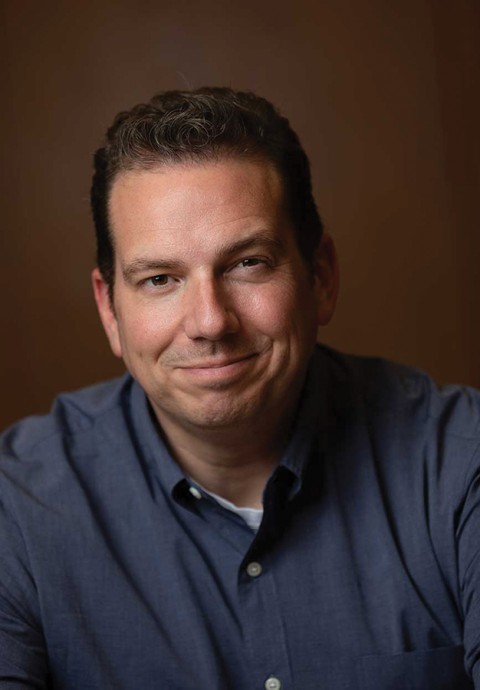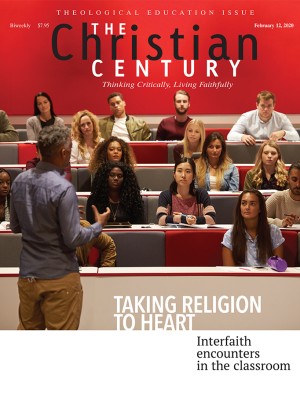Is there a way beyond hyperpartisanship?
“We have remade our nation before and we can do it again.”

Princeton University professor Kevin M. Kruse has focused his research on modern American political and social history. His most recent book (written with Julian Zelizer) is Fault Lines: A History of the United States since 1974, which describes the emergence of stark political polarization and sharp conflicts over race, class, gender, and sexuality. Kruse has written for the Washington Post and other newspapers and regularly offers historical context to current events in his Twitter feed. His other books include White Flight: Atlanta and the Making of Modern Conservatism (2005) and One Nation Under God: How Corporate America Invented Christian America (2015).
In Fault Lines you trace some key developments in politics and media that have led to the increased polarization of American society since the 1970s. Yet the 1960s and 1970s were also a time of intense polarization—including the rise of a much celebrated counterculture. Are we more polarized than that era?
Read our latest issue or browse back issues.
There was stark polarization in the late 1960s and early 1970s as Americans found themselves divided over such issues as civil rights, the Vietnam War, and feminism. But in that era the two major political parties were still ideologically diverse—there were large numbers of conservative Democrats and there were liberal and moderate Republicans. Today, our polarized public has sorted itself into discrete political camps, a development that amplifies the differences in society.
The post–World War II consensus in American politics was shaped by a common enemy: communism and the Soviet bloc. Is having a common enemy an important dimension of consensus politics?
Absolutely. The postwar “liberal consensus” was in many ways defined by the constraints of the Cold War. It’s no accident that soon after the downfall of the Soviet Union, the United States entered a new era of hyperpartisan politics, marked by the rise of Newt Gingrich Republicans in the House of Representatives.
There were hopes that the 9/11 attacks might unite the nation as the Cold War had. But it turned out that foreign policy was bent to domestic partisan politics, with support for the invasion of Iraq mobilized as a campaign issue.
It’s sometimes said that over the past 50 years the left has won the culture war and the right has won the political war. That is, liberals have been winning the cultural arguments on diversity, same-sex marriage, and gender roles while conservatives have been winning the political arguments for lower taxes and less government regulation. Do you see truth in that?
In broad strokes, that’s right. The nation has adopted liberal cultural changes like same-sex marriage and hit milestones like the election of an African American president while adopting policies that had once been advanced only by conservatives, such as deregulation and tax cuts.
But there have been clear exceptions on both ends. The Affordable Care Act realized a policy goal liberals had been chasing unsuccessfully since Teddy Roosevelt’s time, while the recent resurgence of white nationalism and anti-Semitism is a stark reminder that racial and religious diversity has not advanced as far as we might have assumed.
Are Americans as polarized in their actual convictions as the political rhetoric suggests?
Polling shows there is wide agreement on some issues that would seem to be polarizing. Take the overwhelming support for some basic gun control measures, for instance. But the media and political institutions are now set up to amplify the differences.
A major factor shaping American politics is an external one: the realities of globalization, which have upended manufacturing in the US and led to the economic squeeze on the middle class and the weakening of unions. How do you gauge its impact on the political fault lines?
Globalization and free trade have reshuffled the fault lines. A look at the history of the North American Free Trade Agreement shows the strange bedfellows that were behind it: Republican George H. W. Bush signed the treaty and Democrat Bill Clinton, in a move to the political center, oversaw its ratification. And while NAFTA originated in the free-market, antiunion ideology of the GOP, now President Trump has emerged as the most vocal critic of free trade deals and a champion of the protectionism that used to be promoted by Democrats.
You wrote a book about the development of civil religion in the US in the 1950s. How does religion, civil or otherwise, play into the fault lines you describe?
The religious nationalism of the Eisenhower era was cast in very broad terms—not just as a “Judeo-Christian tradition” (a fairly new term at the time) but as one that welcomed Muslims and Buddhists (from the new state of Hawaii) too. This was done intentionally as a way to unite Americans around a common set of shared principles. But with Richard Nixon the civil religion language of the Eisenhower era was weaponized for partisan, exclusionary ends—and that trend has only continued under Trump.
What do you make of an argument like Jonathan Haidt’s in The Righteous Mind that conservatives and liberals are divided by fundamentally different moral intuitions? Conservatives respond primarily to themes of faith, patriotism, valor, law, and order, while liberals respond primarily to themes of compassion and fairness. Each side approaches political issues by way of prepolitical commitments.
Haidt’s argument aligns a little with one I’ve long found persuasive, advanced by sociologist James Davison Hunter in his 1989 book Culture Wars. Hunter observed that liberals and conservatives valued freedom and justice, but noted that they put those values into action in very different ways. Conservatives saw freedom in economic terms (tax cuts, deregulation) and justice in social terms (upholding moral standards), while liberals saw freedom in social terms (being pro-choice, supporting gay rights) and justice in economic terms (minimum wage, union rights). I think that’s right.
Consensus politics is not necessarily a good thing when it is consensus on a terrible policy, such as racism or militarism. Is extreme polarization necessarily a bad thing?
Consensus is not automatically a good thing, but our state of hyperpolarization prevents any kind of consensus or compromise from being reached at all. We saw this repeatedly during the Obama years, when congressional Republicans adopted an explicit strategy of rejecting anything Obama proposed, regardless of the content. As Republican senator George Voinovich later recalled, the mandate was simple: “If he was for it, we had to be against it.”
That approach led to some surprising moves: Republicans voted against the stimulus package in which one-third of the plan consisted of tax cuts they themselves had previously proposed, and they reversed course on deficit reduction plans as soon as Obama agreed to them. When one side refuses to meet in the middle, the middle doesn’t exist and, as a result, progress doesn’t happen.
Does history offer any examples of how extreme polarization is transformed or burns itself out?
It’s worth remembering that the polarization of the 1960s and 1970s was mitigated to some degree by political reforms and cultural changes in the decade after Watergate. We have remade our nation before and we can do it again. But that process begins at the local level, through grassroots movements and people’s involvement in their communities. The nation doesn’t change on its own; citizens have to make it change.
A version of this article appears in the print edition under the title “Partisan times.”






